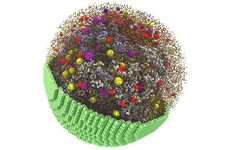
Stanford's Biotic Games Series Let You Play With Living Parameciums
References: news.stanford.edu & gizmag
Video games let their users control the fates of virtual beings, but Stanford's 'Biotic Games' series is the first to use living cells as a key gameplay component.
Conceived by Riedel-Kruse and his team, Stanford's 'Biotic Games' requires players to control real microorganisms to complete game objectives. This is achieved by the manipulation of electrical field polarity or releasing bouts of chemicals; everything is done through the use of a video game controller. So far, the games available include Ciliball, PAC-mecium, Biotic Pinball and POND PONG, but more are constantly being developed.
Conceived by Riedel-Kruse and his team, Stanford's 'Biotic Games' requires players to control real microorganisms to complete game objectives. This is achieved by the manipulation of electrical field polarity or releasing bouts of chemicals; everything is done through the use of a video game controller. So far, the games available include Ciliball, PAC-mecium, Biotic Pinball and POND PONG, but more are constantly being developed.
Trend Themes
1. Living Organism Gaming - Incorporating living microorganisms as key components in gaming presents unique opportunities for entertainment and education.
2. Biotic Technology - Developing technology that can effectively control and interact with living organisms presents challenges and opportunities for various industries.
3. Biofeedback Gaming - Games that require manipulation of living organisms through electrical and chemical stimulation offer potential for biofeedback therapy and medical research.
Industry Implications
1. Gaming - Integrating living microorganisms as game components creates novel gaming experiences and introduces potential revenue streams for the gaming industry.
2. Biotechnology - Developing technology capable of effectively interacting with and controlling living cells could lead to advances in biotechnology and medical research.
3. Healthcare - Exploring the use of biofeedback games in therapy and research offers potential for technological advancements in the healthcare industry.
0.7
Score
Popularity
Activity
Freshness
















